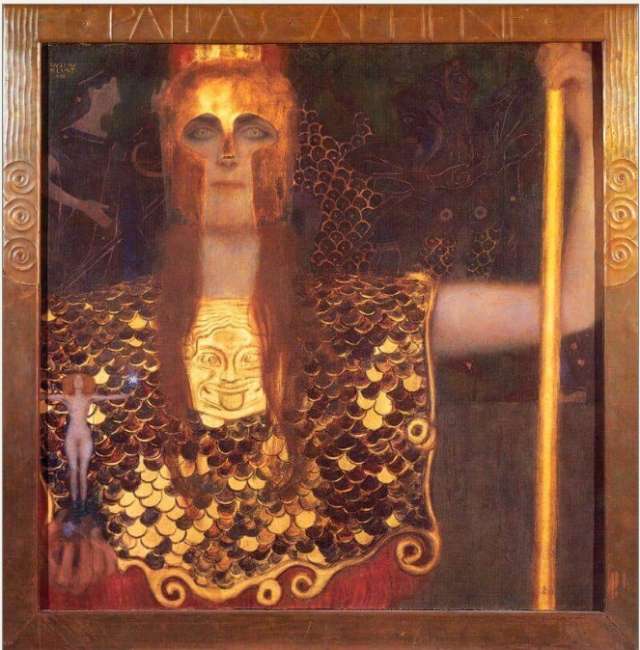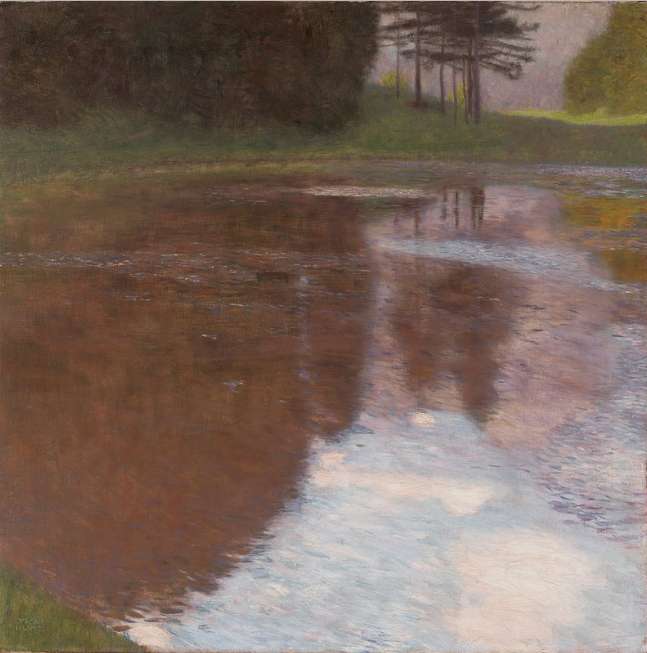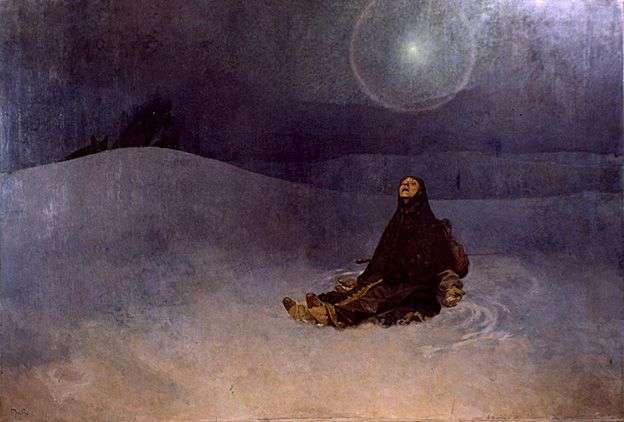
Pallas Athena (1898)

Stiller Weiher (Egelsee bei Golling, Salzburg) (1899)
The prolific output of Alphonse Mucha (1860-1939), a Czech Art Nouveau illustrator and graphic artist who often used dreamy, voluptuous goddesses for subjects, tends to obscure the fact that he was just as much - perhaps more - a history painter who used his art to pay homage to the Slavic People. His key work in this regard is The Slav Epic, a monumental cycle of 20 canvases. Much less ambitious, but just as intriguing, are several smaller works, among them Woman in the Wilderness (1923), aka Star or Siberia.

Young Mucha was strongly influenced by Pan-Slavism and had a high regard of Czarist Russia as the epitome of Slavic values. Woman in the Wilderness, which I happened to come across in the small Mucha Museum in Prague in the summer of 2018, can be regarded as Mucha's evocation of the horrible sufferings inflicted upon the Russians under the bolsheviks, in particular the Great Famine of 1921. An emaciated Russian peasant woman sits exhausted in the snow, unable to move any further. Wolves, savouring an easy prey, lurk over the berm. The hungry woman, symbolising Mother Russia under the yoke of communism, stretches her arms in a gesture of resignation. But the shining star above her head offers not only spiritual salvation but also hope for better times.
Come to think of it. When in Prague, really try to visit that museum. Woman in the Wilderness is about halfway through it, to the right. Seeing the painting as a picture in a book or onscreen is one thing. Seeing it for real is a... well, I can only speak for myself of course, but for me it was a mesmerizing experience.
Good night, and have a lucky an productive week ahead.
MFBB.
No comments:
Post a Comment